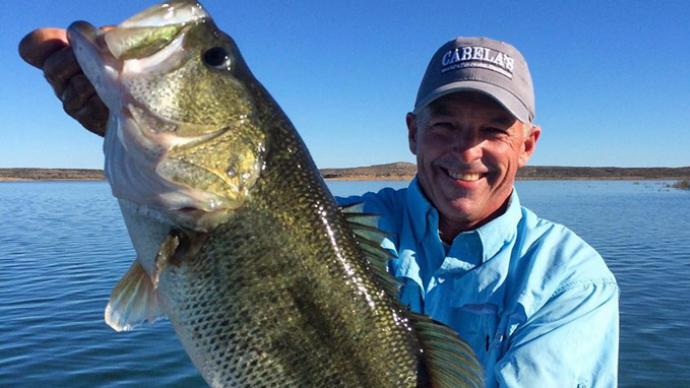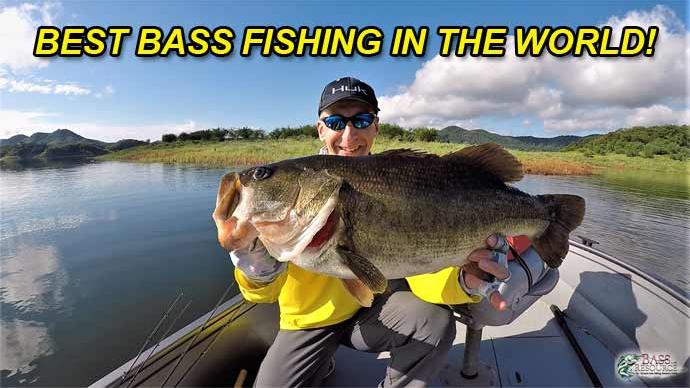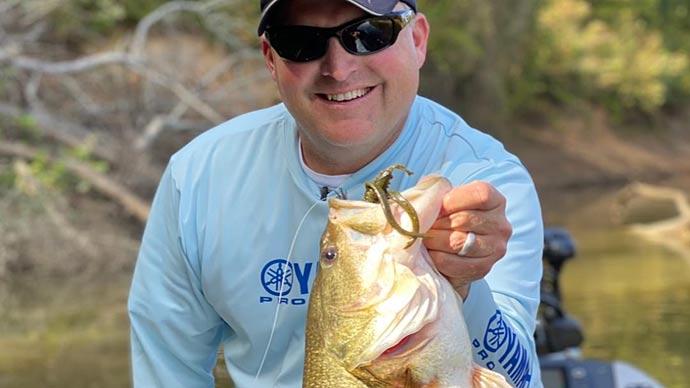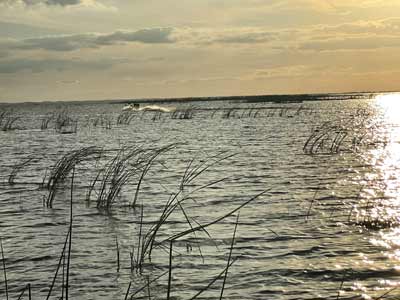
Few bass fisheries have the name recognition and legendary aura as Florida's Lake Okeechobee. It's a mecca for bass anglers, has hosted countless professional tournaments over the decades, and draws anglers from across the country as a "bucket list" fishing destination.
Over the years, it has gone through many different cycles with changing water conditions, disappearing, and shifting aquatic vegetation, but it keeps coming back and producing plenty of bass.
Here is what to know about Lake Okeechobee if you plan to take a trip to "The Big O."
How it Sets Up
The lake is a giant bowl covering 730 square miles and 467,000 surface acres. When viewing the state's aerial photos, it appears as a massive hole in Florida. While the enormous size can be intimidating, the lake still fishes small, with the most productive areas continuing to pump out fish yearly.
Known areas such as Harney Pond, the Monkey Box, the "north shore," Pelican Bay, and the area around J&S Fish Camp have kicked out thousands of bass over the years. These are just a handful of productive areas that seem to hold fish, no matter the current lake conditions or season.
Lake Okeechobee is so famous because of the sheer number of bass swimming in its waters. It's home to plenty of healthy four to eight-pound bass, with quite a few smaller and the occasional giant reaching over ten pounds. It may not be the best destination in the state for double-digit bass, but it still has plenty of them.
The lake is gigantic but relatively shallow throughout. If you are unfamiliar with fishing in Florida, one of the first things to erase from your mind is how great everything looks. The grass is everywhere, and it appears that bass will be in every section of the lake, but unfortunately, that's not the case.
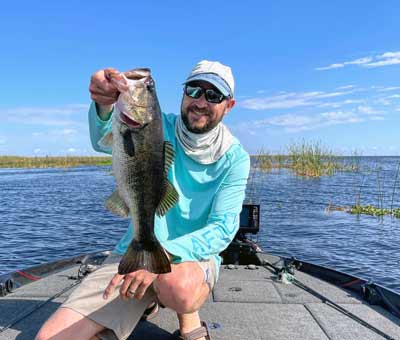
One of the keys with Lake Okeechobee, and all Florida fishing, is finding suitable vegetation. The state is home to many species of grasses and is everywhere you look. Still, the critical detail is finding the correct type of grass, water clarity, and bottom composition. This varies by season, and there are times when Kissimmee grass is the key and others where scattered eelgrass is the ticket.
Areas with a harder bottom are key when bass are spawning, and finding cleaner water will generally produce more bass than dirtier areas. As wind direction significantly impacts the lake's water color, expect to see shifting water clarities daily.
The best advice is to fish it all and determine what the bass prefer based on the timing of your trip. The bass spawn for several months, starting in late fall and well into the spring months. During roughly half of the year, it is possible to find spawning bass, and they can often be found protecting beds in small holes in eelgrass or around the stems of lily pads. As the spawn wraps up and fish move slightly deeper, the edges of Kissimmee grass or the outside line of reeds are good places to look.
Tactics at Play
There are plenty of different ways to catch bass here, whether fishing spinnerbaits, swim jigs, lipless crankbaits, topwaters, or ChatterBaits around scattered grass or punching a beaver-style bait with a big tungsten weight in matted hyacinths.
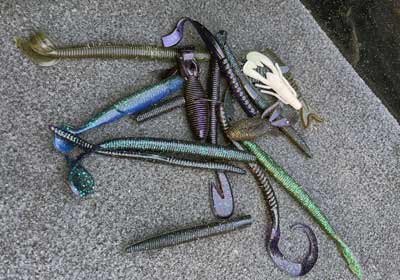
The "rim ditch" surrounding much of the lake and serves as water level and flood control has plenty of rocky banks that lend to tremendous crankbait fishing.
While all those techniques account for many fish, the best all-around option for Lake Okeechobee is some type of soft plastic worm around vegetation.
Swimming worms such as the Zoom Ultravibe Speed Worm or swimbaits like the Reaction Innovations Skinny Dipper or Gambler Big EZ are proven ways to catch Okeechobee bass. Straight tail baits like the Zoom Trick Worm and any variation on the Yamamoto Senko are excellent choices. The possibilities are endless for catching fish, but soft plastics are a great place to start.
Florida is known as the bass capital of the color Junebug, and it works exceptionally well here. Other good options are dark colors like black with a blue flake or solid black. For sunny days and in cleaner water, various shades of watermelon and green pumpkin will also fool plenty of bass.
Lake Okeechobee Accommodations and Attractions
Around the entirety of the lake are small towns, fish camps, RV parks, and motels that can host you for your Okeechobee trip. The two largest towns near the lake are Clewiston on the lake's western shore and the city of Okeechobee on the lake's northern end. Each of these two offers plenty of accommodations, restaurants, tackle stores, and boat launches that will give you everything you need on and off the water.

The economy around the lake is heavily reliant on fishing tourism. You will find the influence everywhere, from fishing-themed restaurants to several excellent tackle shops and bass boats all over the place. It's genuinely a bass fisherman's paradise.
One of the most famous places to stay on the lake is Clewiston's Roland Martin Marina Resort, which includes an RV park, motels, a bar and restaurant, a tackle shop, and a boat launch just down the road. This is a one-stop-shop for bass anglers and has quick access to gas stations, grocery stores, and more in Clewiston.
No matter when you visit the famed marina, you'll likely find yourself surrounded by plenty of fellow bass anglers. Several top-notch guides use it as their home base, and if you hire one, they can help speed up your learning curve and put you on the fish.
Lake Okeechobee is one of the most well-known bass fisheries in America, and it continues to draw anglers from all across the world. It's an extraordinary place with miles of aquatic vegetation and plenty of hungry bass, and every angler should experience it at least once in their lives.


